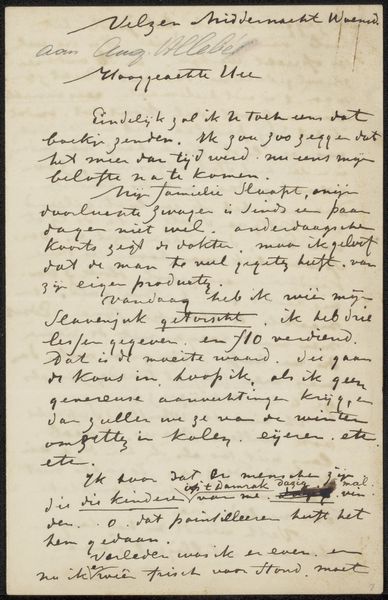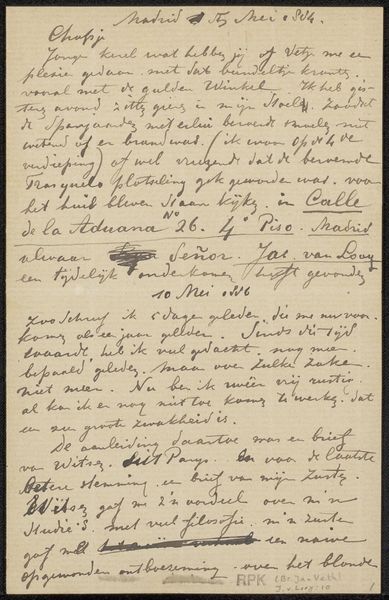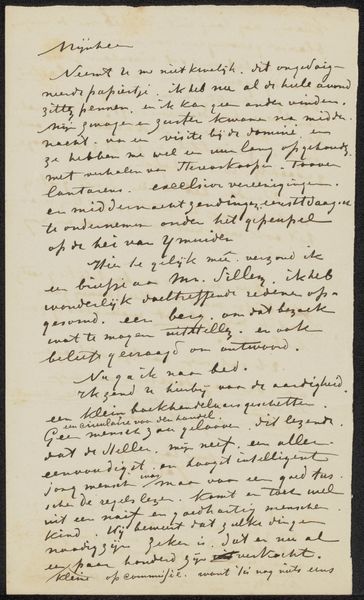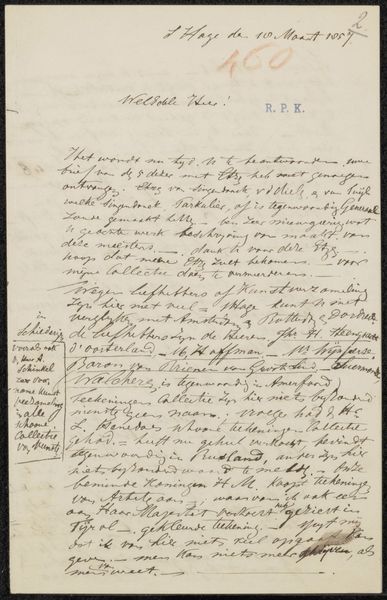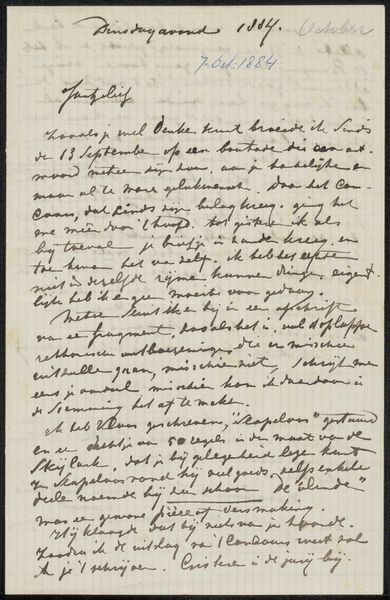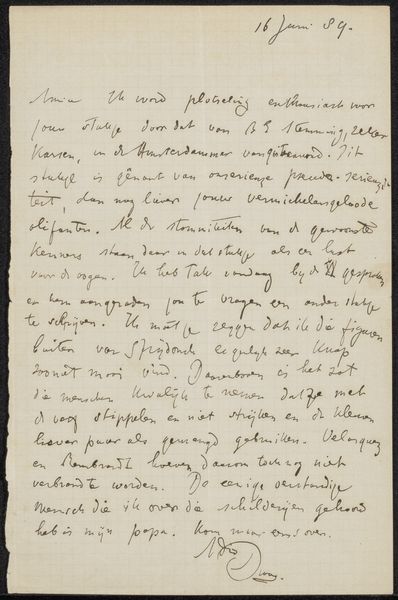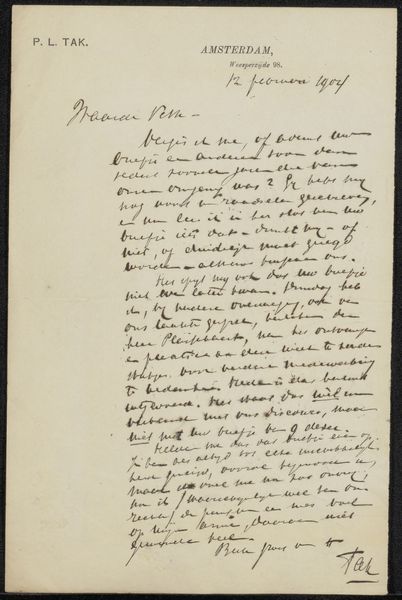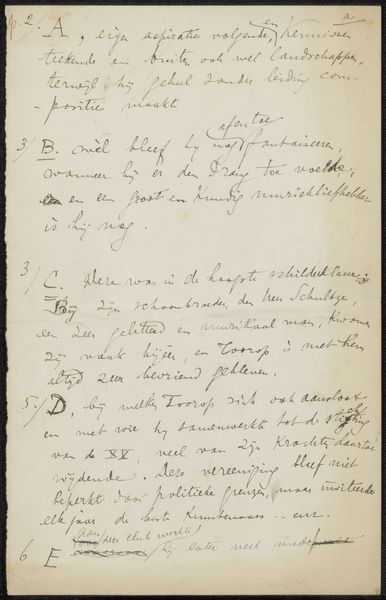
drawing, paper, ink, pen
#
drawing
#
paper
#
text
#
ink
#
pen
Copyright: Rijks Museum: Open Domain
Curator: Looking at "Brief aan Jan Veth," penned by Jac van Looij between 1865 and 1925, one is immediately struck by the intimacy of handwriting rendered permanent through pen and ink on paper. The lines have a rushed, informal feeling, wouldn't you agree? Editor: Absolutely, there's an immediacy that transcends the formal. Seeing the script, it feels as if we're eavesdropping on a conversation, maybe about a critique? The details of the sale, perhaps for funding Van Looij’s practice or patronage networks. There are implications to examine relating to the Dutch art world at the time. Curator: It does present the possibility of multiple interpretations. What speaks to me is Van Looij's craft – his facility with the pen, making marks to both communicate information and also suggest texture through layering and varying line weights. It makes one wonder what other types of labor supported this kind of production and circulation. Editor: Interesting perspective. I see also a network—letters like this created community and cemented artistic reputations, all of which depended on a specific set of class privileges at the time, allowing such leisurely correspondence about market transactions! Van Looij writes of a painting and a sale. It speaks to a commercial ecosystem that excludes many voices, I imagine. Curator: Yes, it underscores that this is one view into the artworld! I also appreciate how this piece straddles art and functional document; a utilitarian medium rendered almost sacred, as if the writing hand itself creates an aesthetic value outside the message. Editor: That division you suggest between art and document dissolves in light of the subject matter itself, no? The letter *is* about art. Who buys and sells. What holds value and how one gains access. A powerful statement simply in its casual delivery. Curator: Indeed! A reflection on how our lives in the present resonate with those from centuries past, and maybe on how similar artistic constraints remain? Editor: Ultimately, seeing the intersections of the creator’s craft, societal position, and economic realities through this historical correspondence grants a fresh awareness.
Comments
No comments
Be the first to comment and join the conversation on the ultimate creative platform.
